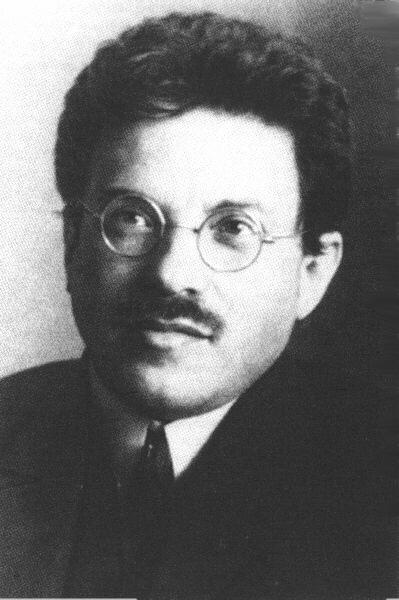Paul Ehrenfest (Paul Ehrenfest)

Paul Ehrenfest was born and grew up in Vienna in a Jewish family from Loštice in Moravia. His parents, Sigmund Ehrenfest and Johanna Jellinek, ran a grocery store. Although the family was not overly religious, Paul studied Hebrew and the history of the Jewish people. Later he always emphasized his Jewish roots. Ehrenfest excelled in grade school but did not do well at the Akademisches Gymnasium, his best subject being mathematics. After transferring to the Franz Josef Gymnasium, his marks improved. In 1899 he passed the final exams. He majored in chemistry at the Institute of technology, but took courses at the University of Vienna, in particular from Ludwig Boltzmann on his kinetic theory of thermodynamics. These lectures had a profound influence: they were instrumental in developing Ehrenfest’s interest in theoretical physics, defined his main area of research for years to come, and provided an example of inspired teaching. At the time it was customary in the German-speaking world to study at more than one university and in 1901 Paul Ehrenfest transferred to Göttingen, which until 1933 was an important centre for mathematics and theoretical physics. There he met his future wife Tatyana Afanasyeva, a young mathematician born in Kiev, then capital of the Kiev Governorate, Russian Empire, and educated in St Petersburg. In the spring of 1903 he met H.A. Lorentz during a short trip to Leiden. In the meantime he prepared a dissertation on Die Bewegung starrer Körper in Flüssigkeiten und die Mechanik von Hertz (The motion of rigid bodies in fluids and the mechanics of Hertz). He obtained his Ph.D. degree on June 23, 1904 in Vienna, where he stayed from 1904 to 1905.
On December 21, 1904 he married Russian mathematician Tatyana Alexeyevna Afanasyeva (1876–1964), who collaborated with him in his work. They had two daughters and two sons: Tatyana (‘Tanja’) (1905–1984), also became a mathematician; Galinka (‘Galja’) (1910–1979), became an author and illustrator of children’s books; Paul, Jr. (‘Pavlik’) (1915–1939), who also became a physicist; and Vassily (‘Wassik’) (1918–1933).[2] The Ehrenfests returned to Göttingen in September 1906. They would not see Boltzmann again: on September 6 Boltzmann took his own life in Duino near Trieste. Ehrenfest published an extensive obituary in which Boltzmann’s accomplishments are described. Felix Klein, dean of the Göttinger mathematicians and chief editor of the Enzyklopädie der mathematischen Wissenschaften, had counted on Boltzmann for a review about statistical mechanics. Now he asked Paul Ehrenfest to take on this task. Together with his wife, Ehrenfest worked on it for several years; the article was not published until 1911. It is a review of the work of Boltzmann and his school, and shows a style all of its own: a sharp logical analysis of the fundamental hypotheses, clear delineation of unsolved questions, and an explanation of general principles by cleverly chosen transparent examples.
In 1907 the couple moved to St Petersburg. Paul Ehrenfest found good friends there, in particular A.F. Joffe, but felt scientifically isolated. Moreover, as an Austrian citizen and of Jewish origin, he had no prospect of a permanent position. Early in 1912 Ehrenfest set out on a tour of German-speaking universities in the hope of a position. He visited Berlin where he saw Max Planck, Leipzig where he saw his old friend Herglotz, Munich where he met Arnold Sommerfeld, then Zürich and Vienna. While in Prague he met Albert Einstein for the first time, and they remained close friends thereafter. Einstein recommended Ehrenfest to succeed him in his position in Prague, but that did not work out. This was due to the fact that Ehrenfest declared himself to be an atheist.[3][4] Sommerfeld offered him a position in Munich, but Ehrenfest received a better offer; at the same time there was an unexpected turn of events. H. A. Lorentz resigned his position as professor at the University of Leiden, and on his advice Ehrenfest was appointed as his successor.
Born
- January, 18, 1880
- Vienna, Austria
Died
- September, 25, 1933
- Amsterdam, Netherlands
Cause of Death
- suicide by gunshot wound



